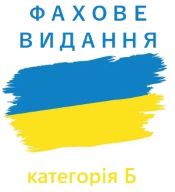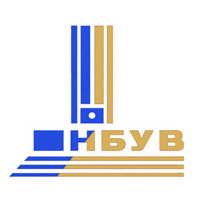Вплив нагріву газу на розрахункові надзвукові параметри струменя газопорошку при продувці шлаку в конвертері. Повідомлення 2
DOI:
https://doi.org/10.31498/2225-6733.47.2023.300059Ключові слова:
конвертор, надзвуковий струмінь, розсіяний потік, реактивний імпульс, реактивна потужністьАнотація
В статті наведено результати чисельного моделювання взаємодії надзвукового нерозрахункового газопорошкового струменя з навколишнім сильно нагрітим середовищем порожнини конвертера, у тому числі з частинками шлаку, які викидаються струменем. Методика визначення глибини проникнення струменя у розплав є предметом багаторічних дискусій, але вона аналітично не вирішена. Запропоновано новий підхід до вирішення цієї проблеми, який полягає в тому, що в даній роботі структура розглядається не за законами дозвукової турбулентної течії, а як надзвукова нерозрахункова. В даній роботі стоїть завдання – для підвищення стійкості шлакової корки в азот передбачено подачу порошку MgO, який в свою чергу потрапляє у струмінь, сповільнює його. Для вирішення цього питання запропоновано розв’язання багатопараметричних рівнянь для встановлення впливу нагріву на якісні характеристики шлакової корки на поверхні футеровки. Створена фізична модель, яка передбачає витікання газопорошкового струменя (N2 + порошок) із сопла Лаваля. Встановлено формування за межами сопла струменю, що стає надзвуковим нерозрахунковим з ударною хвилею структурою. Найважливішою гідрогазодинамічною характеристикою газоструминного потоку є його імпульс, який залежить від ряду факторів і фізичних ефектів. Схема вирішення досить високотехнологічної задачі передбачає наступне: розрахунок параметрів газопорошкового потоку на виході із сопла; розрахунок кількості приєднаної газової маси з навколишнього середовища; температури; швидкості імпульсу; -потужності струменю і т.і. Встановлено, що в окремих випадках, коли забезпечується хімічний зв’язок між шлаком і футеровкою (коли має місце оптимальне значення MgO і CaO в шлаку), подачу вогнетривкового порошку можливо припинити і тоді шлак буде роздуватися тільки струменем азоту. Використовуючи закон сталості імпульсу в різних перерізах струменя (наприклад, у вихідному перерізі сопла і в фіксованому перерізі потоку хх), можливо розрахувати: повний імпульс, середньомасову швидкість азотно-порошкового струменя, середньомасову температуру струменя. Показано, що найбільш суттєво на потужність газопорошкового струменя, що витікає в розплав, впливає нагрівання газодисперсного потоку до температури to перед фурменими соплами. Встановлено, що підвищення температури від 50°С до 600°С призводить до збільшення імпульсу майже у 2,75 рази. Спільне рішення майже 50 рівнянь (повідомлення 1 і 2) дозволяє наочно представити картину взаємодії надзвукового струменя з ударними хвилями і розплавом, а також розробити рекомендації щодо підвищення енергоефективності шлакодувної технології. Оскільки проведення експерименту в порожнині конвертера складно, результати чисельних розрахунків перевірені методом особливих випадків
Посилання
A Review of Slag Splashing / K.C. Mills, Y. Su, A.B. Fox, Z. Li, R.P. Thackray, H.T. Tsai. ISIJ International. 2005. Vol. 45. Iss. 5. Pp. 619-633. DOI: https://doi.org/10.2355/isijinternational.45.619.
Kalisz D., Sinelnikov V.O., Kuglin K. Investigation of the physicochemical properties of slag splashed on the lining of an oxygen converter. Refractories and Industrial Ceramics. 2018. Vol. 55. No. 5. Pp. 463-468. DOI: https://doi.org/10.1007/s11148-018-0128-1.
Sinelnikov V.O., Kalisz D. Influence the FeO content on slag viscosity at his spraying. Increase the life of the refractory lining. Glass and Ceramics. 2016. Vol. 73. No. 3-4. Pp. 144-148. DOI: https://doi.org/10.1007/s10717-016-9844-5.
Analysis of the flow of gas / powder mixture in the oxygen converter lance nozzles / Kuzemko R.D., Sinelnikov V.O., Mastykash V.V., Kalisz D. Journal of Machine Constuction and Maintienance. 2018. Vol. 108. No. 1. Pp. 111-117.
Аксельрод Л.М. Повышение стойкости футеровки конвертеров: огнеупоры, технологиче-ские приемы / Аксельрод Л.М., Лаптев А.П., Устинов В.А., Геращук Ю.Д. Металл и литье Украины. 2009. № 1-2. С. 9-15.
Sinelnikov V.O., Kalisz D. Modeling viscosity of converter slag. Archives of foundry engineering. 2015. Vol. 15. No. 4. Pp. 119-124.
Kharlashin P.S., Kuzemko R.D., Sinelnikov V.O. Influence of different factors and physical impacts on the power of flowing supersonic jet during slag spraying in the converter. New developments in mining engineering: Taylor & Francis Group, A Balkema Book. London. 2015. Pp. 597-602.
Supersonic Jets Injected into Converter Slag / E.V. Protopopov, R.F. Kalimullin, A.G. Chernyatevich, P.S. Kharlashin, N.A. Chernysheva. Steel in Translation. 2012. Vol. 42. No. 10. Pp. 711-715. DOI: https://doi.org/10.3103/S0967091212100142.
Adding slag to a supersonic jet in an oxygen converter / Kharlashin P.S., Kuzemko R.D., Protopopov E.V., Feyler S. Steel in Translation. 2014. Vol. 45. No. 2. Pp. 100-104. DOI: https://doi.org/10.3103/S0967091215020084.
Power Increase of Supersonic Jets in Oxygen Converter / Sinelnikov V.O., Kalisz D., Żak P.L., Kuzemko R.D. IOP Conference Series: Materials Science and Engineering. 2018. Vol. 461. Pp. 1-6. DOI: https://doi.org/10.1088/1757-899X/461/1/012078.
##submission.downloads##
Опубліковано
Як цитувати
Номер
Розділ
Ліцензія
Журнал "Вісник Приазовського державного технічного університету. Серія: Технічні науки" видається під ліцензією СС-BY (Ліцензія «Із зазначенням авторства»).
Дана ліцензія дозволяє поширювати, редагувати, поправляти і брати твір за основу для похідних навіть на комерційній основі із зазначенням авторства. Це найзручніша з усіх пропонованих ліцензій. Рекомендується для максимального поширення і використання неліцензійних матеріалів.
Автори, які публікуються в цьому журналі, погоджуються з наступними умовами:
1. Автори залишають за собою право на авторство своєї роботи та передають журналу право першої публікації цієї роботи на умовах ліцензії Creative Commons Attribution License, яка дозволяє іншим особам вільно розповсюджувати опубліковану роботу з обов'язковим посиланням на авторів оригінальної роботи та першу публікацію роботи в цьому журналі.
2. Автори мають право укладати самостійні додаткові угоди, які стосуються неексклюзивного поширення роботи в тому вигляді, в якому вона була опублікована цим журналом (наприклад, розміщувати роботу в електронному сховищі установи або публікувати у складі монографії), за умови збереження посилання на першу публікацію роботи в цьому журналі.









